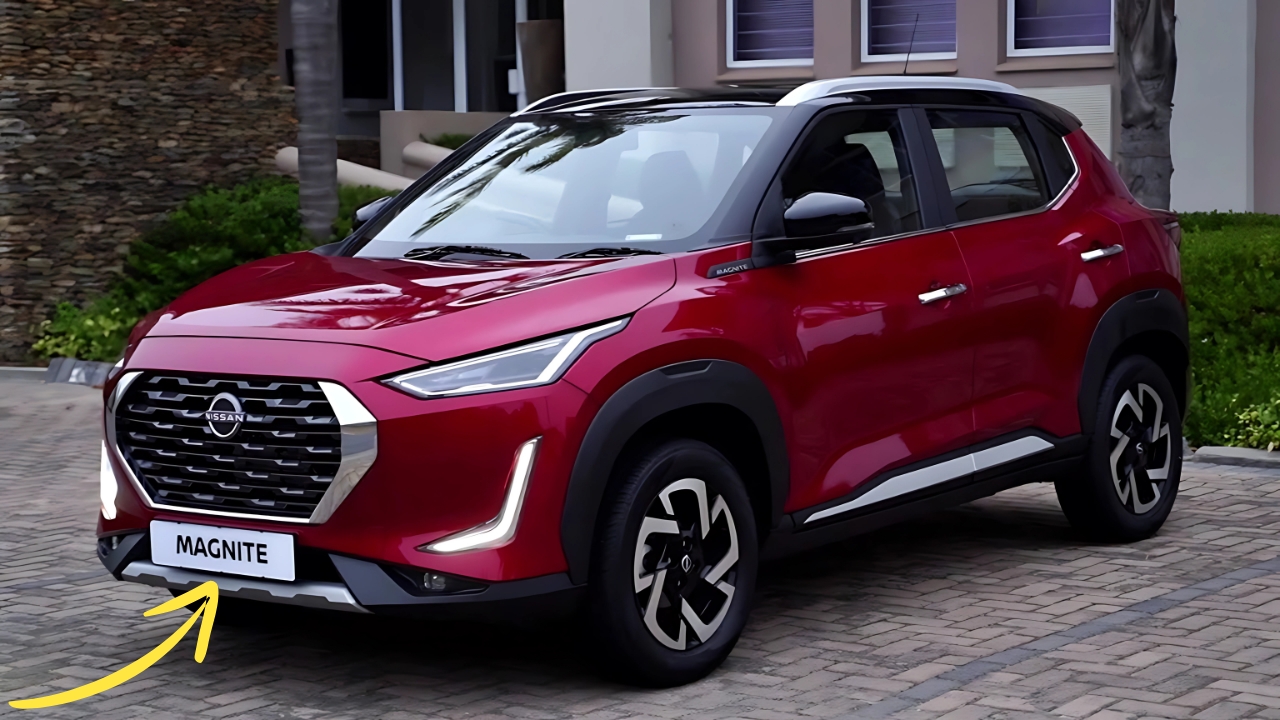Nissan Magnite: The compact SUV landscape has transformed dramatically over the past decade, evolving from a niche category to the dominant force in global automotive markets.
Amidst this revolution, the Nissan Magnite has emerged as a particularly intriguing proposition – one that challenges conventional wisdom about what constitutes value in this hotly contested segment.
Having spent two weeks with the 2025 model across varied driving conditions, I’ve gained fresh insights into how this vehicle manages to punch above its weight class in several meaningful ways.
Nissan Magnite: Market Context- Understanding the Magnite’s Mission
To appreciate the Magnite’s significance, we must first understand its purpose within Nissan’s global strategy.
Developed primarily for emerging markets yet increasingly finding relevance in established ones, the Magnite represents Nissan’s response to shifting consumer preferences toward SUV-like vehicles even at lower price points.
The sub-four-meter footprint – critical for tax advantages in markets like India – required creative solutions to packaging challenges that might have resulted in compromise.
That Nissan largely avoided these compromises speaks volumes about the engineering focus.
The timing of the Magnite’s original introduction proved fortuitous, arriving as urban consumers increasingly sought vehicles with elevated seating positions and visual presence without the space requirements or fuel economy penalties of larger SUVs.
The 2025 refresh builds upon this foundation with thoughtful enhancements rather than revolutionary changes – an acknowledgment that the fundamental formula was largely correct from the outset.
Design Execution: Cohesive Character
Seeing the Magnite in natural light reveals subtleties lost in manufacturer photography.
The interplay between sharp character lines and more organic surfaces creates visual interest that rewards closer inspection, while the contrasting roof option (new for select color combinations in 2025) emphasizes the floating roof effect.
The redesigned LED headlamps now incorporate signature lighting elements that enhance recognition at night – an important brand-building feature even in affordable segments.
What impresses most about the Magnite’s design is its cohesiveness; unlike some competitors that appear to have been designed by committee, the Magnite presents a singular vision executed with conviction.
The hexagonal grille motif repeats in various elements including the fog lamp housing and tail lamp detailing, creating visual harmony without appearing heavy-handed.
The newly designed 16-inch alloys on our test vehicle filled the wheel arches effectively, though the 15-inch wheels on base variants do leave noticeable negative space.
Colors significantly impact the Magnite’s presence. The Flare Garnet Red of our test vehicle highlighted the sculptural elements effectively, while the new Aurora Green offers a sophisticated alternative that stands apart from the increasingly homogeneous color palettes in this segment.
The black roof option, previously limited to specific colors, now extends to most of the palette, allowing for greater personalization.
Living With the Interior: Daily Usability
Extended time with the Magnite reveals thoughtful interior touches that aren’t immediately apparent during brief encounters.
The front seats, while not aggressively bolstered, provide surprisingly good support during longer journeys.
The revised cushioning density addresses feedback about the previous generation, now striking a better balance between initial comfort and long-distance support.
The driving position deserves particular praise, offering a commanding view without forcing an unnaturally upright posture – a common issue in vehicles where seat height has been artificially elevated to create an “SUV feel.”
The steering wheel’s adjustment range accommodates diverse physiques, though taller drivers may wish for slightly more telescopic travel.
Rear accommodation requires some context – while absolute space doesn’t challenge larger vehicles, the effective use of available room impresses.
The seatback angle avoids the upright positioning sometimes found in vehicles optimized for cargo capacity, while the slightly elevated positioning improves visibility for back-seat passengers – particularly appreciated by younger occupants.
Three adults remain a tight fit, but two find generous space by segment standards.
Storage solutions reflect actual usage patterns rather than merely checking specification boxes.
The phone shelf above the gearshift includes not just wireless charging (on higher trims) but thoughtful non-slip surfacing and dimensional consideration for larger modern devices.
Door pockets easily accommodate 1-liter bottles, while the split glove box separates documentation from other items you might access more frequently.
Material selection prioritizes durability without appearing cheap – a difficult balance in this price range.
The textured dashboard material resists scratches and fingerprints effectively, while the leatherette upholstery on higher trims convincingly approximates genuine leather both visually and tactilely.
Piano black elements are thankfully limited to smaller trim pieces, reducing the potential for scratches and dust accumulation that plague larger applications of this material.
Technological Integration: Practical Innovation
The 8-inch infotainment system balances functionality with simplicity – an important consideration for markets where this may represent a user’s first experience with such technology.
The latest interface reduces animation delays that occasionally plagued the previous system, while wireless smartphone integration eliminates the cable clutter that accumulates with daily use.
Voice recognition functionality has improved markedly, now handling natural language commands for navigation and media with reasonable accuracy.
The digital instrument cluster on our Turbo CVT XV Premium variant offers customization without overwhelming complexity.
The ability to display navigation instructions within the driver’s line of sight proves particularly valuable in unfamiliar urban environments, reducing the need to glance at the central screen.
Information hierarchy has been carefully considered, with critical data remaining consistently visible regardless of display mode selection.
Nissan’s connected car technology, accessible through the NissanConnect smartphone application, provides expected functionality like remote locking and vehicle location.
More impressive is the geofencing capability that allows owners to set boundaries and receive notifications if the vehicle exceeds them – a feature particularly appreciated by parents of younger drivers or those who occasionally loan their vehicle.
Driving Experience: Urban Compatibility
The Magnite’s driving dynamics reveal careful calibration for its intended environment. The turbocharged engine in our test vehicle delivers its 100 horsepower and 160 Nm of torque with minimal lag – a welcome characteristic when navigating unpredictable traffic situations.
Power delivery feels pleasingly linear rather than exhibiting the sudden surge sometimes associated with small-displacement turbocharged engines.
The continuously variable transmission has received significant attention for 2025, with revised programming that better mimics traditional stepped gears under acceleration while maintaining efficiency during steady-state cruising.
The sport mode sharpens response without becoming frantic, though most owners will likely leave it in standard mode for daily use.
Manual shift capability through the gear lever offers further control when desired, though paddle shifters remain absent even on higher trims.
Suspension tuning favors compliance over sportiness – an appropriate choice given road conditions in many target markets.
The Magnite absorbs broken pavement admirably while maintaining composure during directional changes.
Body roll exists but remains controlled, communicating vehicle dynamics without becoming unsettling.
The 205mm ground clearance proved valuable beyond marketing specifications, allowing confident navigation of severe speed bumps and occasional unfinished road sections without scraping undercarriage components.
Steering calibration prioritizes ease in urban environments, with light effort at parking speeds that weights up naturally as velocity increases.
Feedback remains limited but appropriate for the vehicle’s purpose – this isn’t marketed as a driver’s machine, after all.
The 5.3-meter turning radius deserves particular mention, enabling U-turns in spaces that would challenge many competitors.
Efficiency Considerations: Real-World Results
Fuel economy often diverges significantly from official figures, but our testing revealed the Magnite’s claims largely withstand scrutiny.
The turbocharged CVT combination returned approximately 15.8 km/l in mixed driving – about 10% below the certified figure but impressive considering our testing included significant air conditioning use and occasional spirited driving.
More conscious eco-driving easily pushed this beyond 17 km/l on highway stretches.
The 40-liter fuel tank provides a practical range of approximately 630 kilometers between refueling – a meaningful advantage for those in areas where fuel stations may be widely spaced.
The real-time economy display encourages efficient driving without becoming a distraction, while the eco-coaching function provides useful feedback without feeling judgmental.
Ownership Proposition: Value Beyond Purchase
Nissan’s approach to ownership costs reveals recognition that the initial purchase price represents only one component of overall vehicle expense.
Service intervals of 10,000 kilometers reduce maintenance frequency compared to competitors requiring 5,000-kilometer visits, while the digitized service history through the NissanConnect app helps maintain resale value through documented care.
Parts pricing analysis reveals thoughtful engineering decisions that reduce common repair costs – the segmented front bumper design, for instance, allows replacement of damaged sections rather than the entire component.
Similarly, the modular headlamp assembly enables individual repair of damaged elements rather than complete replacement.
Nissan Magnite:
The Nissan Magnite ultimately impresses not through class-leading performance in any single area but through its remarkably well-balanced execution across all aspects that matter to its target audience.
It delivers the SUV experience many buyers seek – elevated seating position, confident stance, practical versatility – without the compromises in efficiency or urban maneuverability that larger vehicles often impose.
In challenging prevailing industry wisdom about necessary compromises at this price point, the Magnite forces a reconsideration of what constitutes value in the compact SUV segment.
Rather than a stripped-down version of a larger vehicle, it presents as a thoughtfully engineered product designed specifically for its purpose and users.
That this approach has resonated with consumers globally suggests Nissan may have identified a formula worth emulating across other segments – focusing on core user needs rather than specification sheet competitions that often result in features without meaningful benefit.
For urban dwellers seeking practical transportation with style, presence, and modern technology, the Magnite makes a compelling case that bigger isn’t always better – and that value encompasses far more than initial purchase price.





